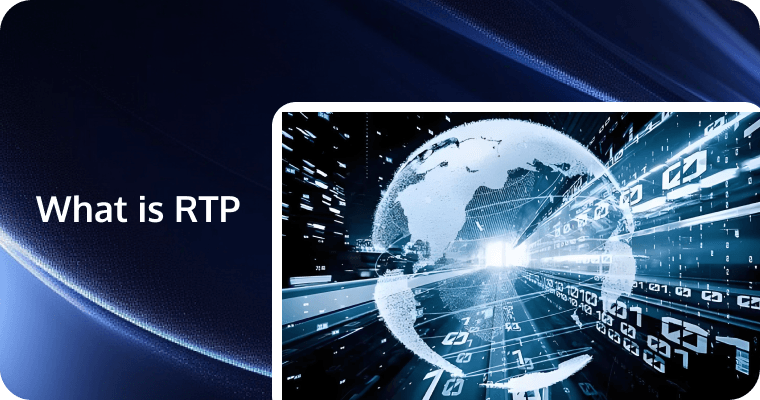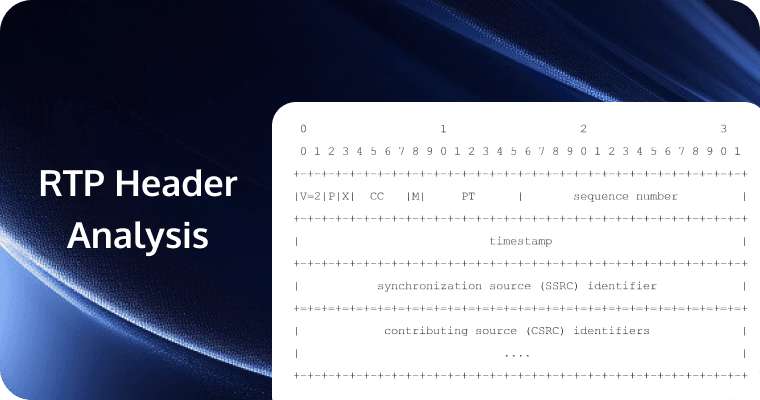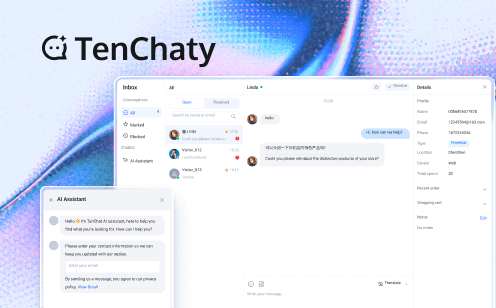Real-time multimedia communication has become an indispensable part of our daily lives and work. Whether through remote work meetings, online education, video entertainment, or social interactions, users expect seamless and instant communication and sharing. This demand has driven the rapid development of real-time multimedia technology, with the Real-time Transport Protocol (RTP) at its core. RTP is a network transmission protocol specifically designed for transmitting real-time data, such as audio and video. Its primary function is to provide end-to-end real-time data transmission services, ensuring synchronization and timing of multimedia data streams, thereby supporting a high-quality real-time communication experience.
This article aims to explore the working principles, key features, application scenarios, challenges, and solutions of the RTP protocol. We will begin with a basic definition and historical background of RTP, gradually delving into its technical details, including packet structure, timestamps, synchronization mechanisms, and payload types. Next, we will examine RTP's applications in various fields, such as Voice over IP (VoIP), video conferencing, and streaming services, and how it collaborates with the Real-time Transport Control Protocol (RTCP) to monitor and provide feedback on transmission quality. Additionally, we will discuss the challenges RTP faces, including network latency, packet loss, and security.

Overview of RTP Protocol
1. Definition of RTP
RTP is a network protocol designed for transmitting real-time data streams, such as audio and video, over IP networks. It provides a way to synchronize multimedia data between multiple participants, ensuring the timing and order of data, thereby achieving a smooth communication experience. In multimedia communication, RTP plays a core role in data transmission. It is responsible for transmitting data, marking the type and order of data, and providing timestamps, which are essential for synchronizing multimedia data from different sources.
2. History and Development of RTP
The RTP protocol originated in 1996 when the Internet Engineering Task Force (IETF) released RFC 1889, defining the basic framework of RTP. This protocol was proposed to meet the growing demand for multimedia communication, particularly on the Internet.
As Internet technology evolved, RTP underwent numerous revisions and extensions. RFC 3550, released in 2003, replaced RFC 1889 and became the latest standard for RTP. The development of RTP also includes support for multiple encoding formats and its integration with RTCP for comprehensive service quality monitoring.
The standardization of RTP is an ongoing process. With the emergence of new multimedia technologies and applications, RTP continues to be updated and optimized to address new technical challenges.
3. Main Components of RTP
RTP packets consist of several parts, including a fixed-length header and a subsequent payload (i.e., the actual transmitted multimedia data). The header contains control information such as version number, payload type, sequence number, timestamp, and synchronization source identifier (SSRC).
- Version Number: Identifies the RTP version. Currently, RTP version 2 is widely used.
- Payload Type: Indicates the type of RTP payload format, such as G.711 audio, H.264 video, etc.
- Sequence Number: A self-incrementing number used to ensure the order of data packets.
- Timestamp: Used to synchronize media streams, usually based on sampling time.
- Synchronization Source Identifier (SSRC): Identifies the synchronization source and is used to distinguish different RTP streams.
- Payload: The payload is the data actually transmitted in the RTP packet, which can be compressed or uncompressed audio, video, or other types of data.
- Extension: The RTP header may contain an extension field to support additional functions, such as extensions to the header or additional control information.

Key Features of RTP Protocol
1. Timestamp and Synchronization
- Role of Timestamp: The timestamp field in the RTP packet header identifies the sampling time of the first byte of a specific data in the media stream. This timestamp is based on the sampling clock, which is usually the sampling time for audio and the sampling time of the first sample of the frame for video.
- Implementation of Synchronization: In multimedia communication, synchronization is crucial, especially when audio and video streams need to be played simultaneously. RTP uses timestamps to achieve synchronization. The receiver determines the playback time of the data packet based on the timestamp to ensure the synchronization of the audio and video streams.
- Timestamp Calculation: The unit of the timestamp is usually the reciprocal of the sampling frequency. For example, for a sampling frequency of 8000Hz, the unit of the timestamp is 1/8000 seconds. The initial value of the timestamp can be arbitrary but must be consistent within the session.
2. Payload Type and Encoding
- Payload Type: The payload type field of RTP defines the type of data carried in the RTP packet. This field allows the receiver to identify the format of the data in the packet and select the appropriate decoder for processing.
- Supported Encoding Formats: RTP supports a variety of audio and video encoding formats, such as G.711, G.722, H.264, VP8, etc. Different payload type values correspond to different encoding formats, which can be found in the RTP specification document.
- Dynamic Payload Type: In addition to statically defined payload types, RTP also allows dynamic definition of payload types to support new encoding formats or private formats.
3. Sequence Number and Packet Sorting
- Role of Sequence Number: The sequence number field in the RTP packet header identifies the sequence of packets sent by the sender. At the beginning of each RTP session, the sequence number starts with a random value, and then the sequence number of each packet sent increases.
- Packet Sorting Mechanism: The receiver uses sequence numbers to detect lost packets and reorder packets that arrive out of order. Sequence numbers are also used to handle duplicate packets to ensure data integrity and order.
Through these key features, the RTP protocol provides efficient and reliable real-time multimedia data transmission services in various application scenarios. These features ensure the real-time transmission of data and provide the necessary synchronization and monitoring mechanisms, making RTP an important protocol in the field of real-time communications.
Application Scenarios of RTP Protocol
1. VoIP (Voice over IP)
Application Scenarios: In VoIP applications, RTP transmits real-time voice data. Through Internet telephone services, users can make voice calls, and RTP ensures the real-time transmission and quality of voice data.
Advantages: The low latency feature of RTP is crucial for VoIP because it reduces the sense of delay in calls and provides a more natural conversation experience. Additionally, the dynamic jitter buffer and packet loss handling mechanisms supported by RTP help maintain call quality under unstable network conditions.
2. Video Conferencing Systems
Application Scenario: Video conferencing systems rely on RTP to transmit real-time audio and video data, allowing participants in different locations to communicate face-to-face.
Advantages: RTP's timestamp and sequence number mechanisms ensure the synchronization and order of audio and video streams, while its streaming transmission characteristics allow video conferencing systems to dynamically adjust quality when network conditions change to maintain a smooth conference experience.
3. Streaming Media Transmission
Application Scenario: In streaming media services, such as online video on demand and Internet TV, RTP transmits continuous audio and video streams, allowing users to download and play simultaneously without waiting for the entire file to be downloaded.
Advantages: The streaming transmission characteristics of RTP enable streaming media services to automatically adjust the playback quality according to the user's network conditions, providing the best viewing experience. Additionally, RTP supports a variety of audio and video encoding formats to meet the needs of different streaming media services.
4. Online Games and Simulations
Application Scenarios: Online games and simulation environments require low-latency and high-synchronization communication. RTP is used in these scenarios to transmit game audio and video data, as well as possible game status updates.
Advantages: The real-time and synchronization mechanisms of RTP are crucial for online games. They ensure the interaction between players and the synchronization of the game world. Furthermore, the extensibility of RTP allows developers to customize specific data transmission requirements as needed, such as transmitting game control signals or status information.
Challenges and Solutions of RTP Protocol
1. Network Delay and Jitter
Network delay can seriously affect the experience of real-time communication, especially in real-time video and audio transmission. High delay can cause communication asynchrony and affect user experience.
Jitter refers to the variation in network delay. RTP introduces a jitter buffer to smooth this variation and reduce the disorder and loss of data packets caused by network jitter. The jitter buffer can store received data packets and gradually release them when network conditions improve to ensure the continuous playback of audio or video streams.
2. Packet Loss and Error Recovery
In real-time communication scenarios, packet loss can cause problems such as image freeze and sound interruption, affecting user experience. Packet Loss Detection and Retransmission Mechanism: The RTP protocol can detect packet loss through sequence numbers and recover through retransmission mechanisms. Common retransmission mechanisms include retransmission based on NACK (Negative Acknowledgment) and forward error correction technology based on FEC (Forward Error Correction).
NACK is a retransmission mechanism used in real-time communication protocols, such as RTP, to address packet loss. When a receiver detects that a packet has been lost—typically identified through the sequence numbers in the RTP header—it sends a NACK message back to the sender, indicating which specific packets were not received.
FEC is an effective error control mechanism that allows the receiver to repair lost data packets without feedback from the sender. By adding redundant data at the sender, the receiver can use this redundant information to recover the original data even when network conditions are poor.
3. Security Issues
The RTP protocol itself does not provide security mechanisms such as encryption or authentication, making it vulnerable to security threats such as eavesdropping and tampering. To enhance the security of RTP, SRTP (Secure Real-time Transport Protocol) can be used to encrypt RTP packets. Additionally, RTP packets can be encrypted using libraries such as OpenSSL to protect the transmitted data from unauthorized access.
Through these solutions, the RTP protocol can provide more stable and secure real-time transmission services in the face of network delays, packet loss, and security challenges. The implementation of these strategies and mechanisms helps to improve the robustness and reliability of the RTP protocol in complex network environments.
Conclusion
RTP (Real-time Transport Protocol) plays an indispensable role in modern communication systems. Its efficient real-time data transmission capabilities, precise synchronization mechanisms, and flexible load handling make it the core of real-time multimedia communication. With the deep integration of emerging technologies such as 5G and WebRTC, RTP will continue to evolve to adapt to higher bandwidth and lower latency network environments, and expand into new fields such as virtual reality and augmented reality.
Unlock the full potential of real-time communication with Tencent Real-Time Communication (TRTC)! Leveraging the power of RTP, TRTC offers unparalleled efficiency, precise synchronization, and flexible load handling for your multimedia needs. Seamlessly integrate TRTC into your applications to experience low-latency, high-quality audio and video interactions, even in challenging network conditions.
Don't miss out on the future of communication. Start using TRTC today to provide your users with a superior, reliable, and immersive experience. If you have any questions or need assistance, our support team is always ready to help. Please feel free to Contact Us or join us in Telegram.
FAQs
Q1: What is RTP and why is it important in modern communication systems?
A: RTP (Real-time Transport Protocol) is crucial for efficient real-time data transmission, precise synchronization, and flexible load handling in multimedia communication.
Q2: How does RTP enhance real-time multimedia communication?
A: RTP provides high-quality, low-latency audio and video transmission, making it essential for real-time multimedia applications.
Q3: What emerging technologies are integrating with RTP?
A: Technologies like 5G and WebRTC are deeply integrating with RTP to support higher bandwidth and lower latency requirements.
Q4: In which new fields is RTP expected to expand?
A: RTP is expected to expand into new fields such as virtual reality (VR) and augmented reality (AR), adapting to their specific needs.
Q5: How does RTP handle synchronization in real-time communication?
A: RTP uses precise synchronization mechanisms to ensure that audio and video streams are perfectly aligned during transmission.

